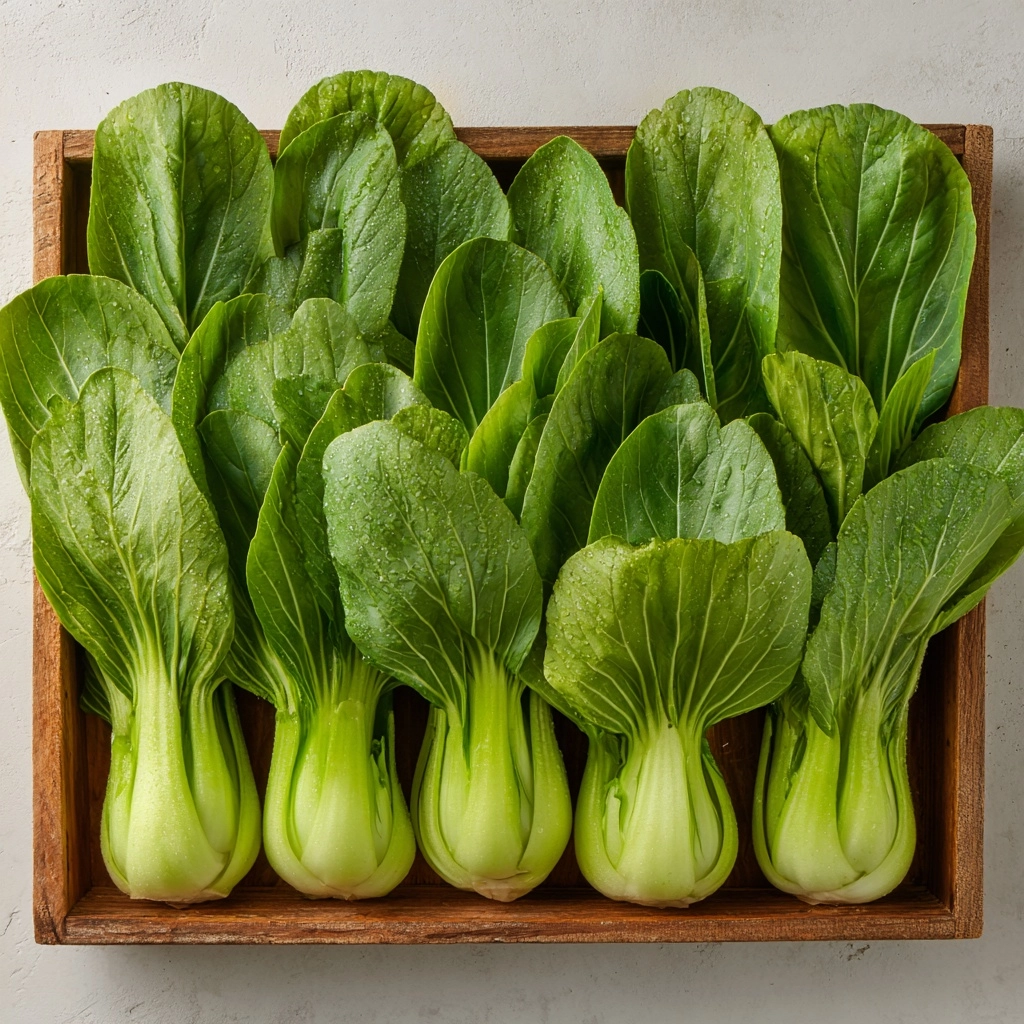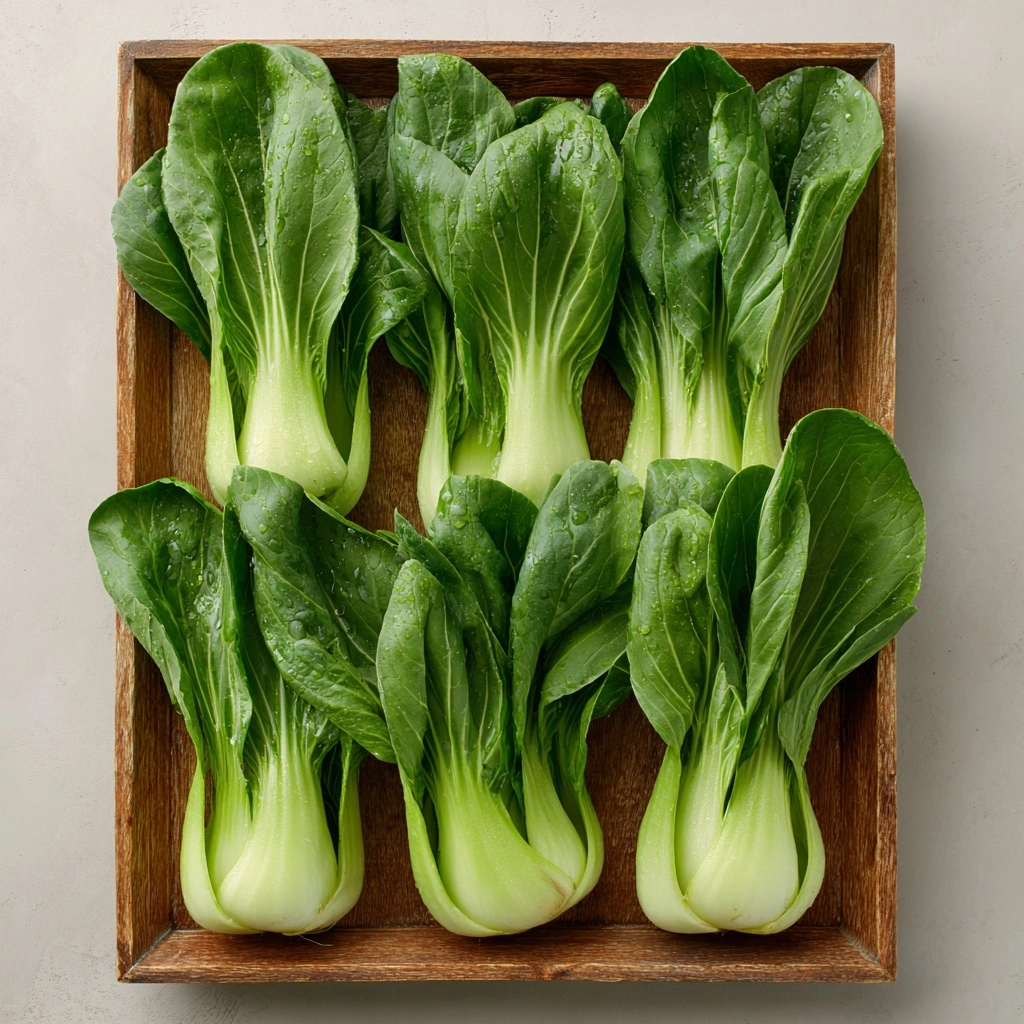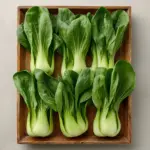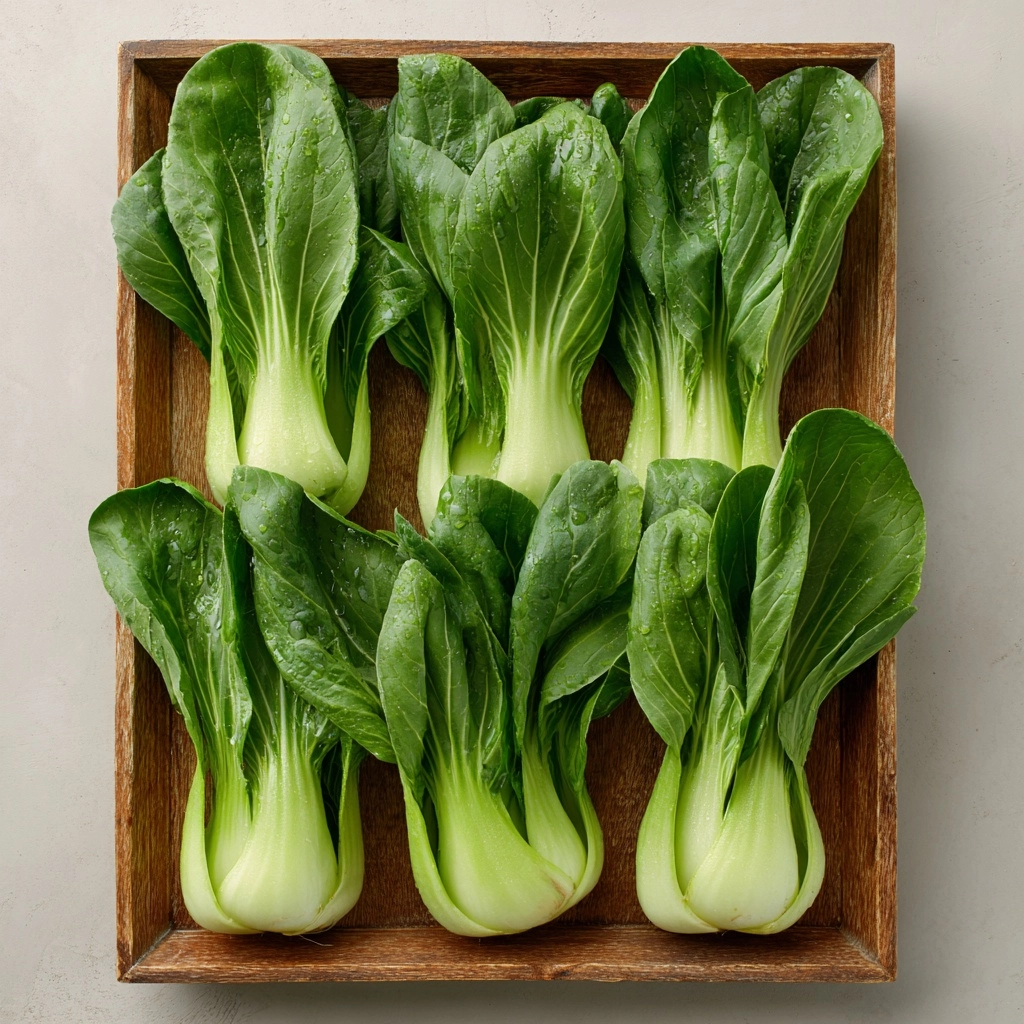If you’ve ever wandered past the vibrant green bundles in the produce aisle and asked yourself, “What Does Bok Choy Taste Like?” you’re not alone—and you’re in for a treat! This humble leafy green, with its crunchy stalks and tender leaves, offers a tasting adventure that’s as fascinating as it is delicious. Today, we’re diving fork-first into bok choy’s unique flavor profile, both raw and sautéed, with a simple, quick recipe that lets you experience all its subtle charms. Whether you’ve tasted it before or this is your first bite, you’re about to discover why bok choy deserves a spotlight in your kitchen.

Ingredients You’ll Need
The ingredient list is short, but each one plays a starring role in bringing out the true flavors and textures that make this tasting so memorable. These basics allow bok choy’s natural personality to shine—no fancy stuff necessary!
- Bok choy: Choose baby bok choy for extra tenderness, or regular bok choy for a more robust bite—both offer delightful layers of flavor and a wonderful crunch.
- Olive oil or sesame oil (optional): Just a little makes sautéing a breeze while adding a subtle nutty or grassy aroma, depending on which you use.
- Pinch of salt (optional): This tiny touch brings out bok choy’s natural sweetness and softens its edges—think of it as the finishing flourish.
How to Make What Does Bok Choy Taste Like?
Step 1: Prep Your Bok Choy
Start by giving your bok choy a good rinse under cold water to remove any dirt hiding between the leaves. Trim the base off and separate the stalks. This simple prep preserves both the satisfying crunch of the stems and the silky feel of the leaves, essential for capturing every nuance of what does bok choy taste like.
Step 2: Taste Bok Choy Raw
For the purest experience, nibble both a white stem and a dark green leaf. The fresh stalk offers a clean, juicy snap with a mild, cabbage-like flavor. The leaf brings a gentle bitterness, much like spinach. Tasting raw bok choy side by side like this helps you pick up on the differences that truly answer the question: what does bok choy taste like?
Step 3: Sauté for a Warm Twist
If you prefer a cooked sample, heat a skillet over medium with a splash of olive or sesame oil. Toss in the bok choy pieces and sauté for 3 to 5 minutes, stirring gently. When tender and glossy, sprinkle with just a pinch of salt. The magic here is in noticing how the texture softens and the flavor mellows into something subtly sweet and earthy—a totally different side to what does bok choy taste like.
Step 4: Compare and Savor
Take a moment to taste the raw and sautéed versions side by side. Notice the transformation: raw is crisp, vibrant, and peppery, while cooked is tender, juicy, and almost melts on your tongue. Savor the contrast as you find your favorite answer to what does bok choy taste like!
How to Serve What Does Bok Choy Taste Like?

Garnishes
Give your bok choy tasting a little sparkle with a sprinkle of flaky sea salt, toasted sesame seeds, or a drizzle of chili oil. These finishing touches not only look beautiful, but also accentuate bok choy’s nuanced flavors and textures with a hint of crunch or gentle heat.
Side Dishes
Bok choy’s light, refreshing character pairs effortlessly with steamed white rice, garlicky noodles, or even a citrusy tofu salad. Thanks to its chameleon-like nature, it cozies up next to almost anything and invites a wide range of simple, savory accompaniments.
Creative Ways to Present
Elevate your tasting by serving bok choy on a wooden board like a veggie charcuterie, or layer thinly sliced stalks and leaves in a rainbow salad. For a playful twist, offer tasting spoons, so everyone can compare raw and sautéed samples and share their first impressions right at the table.
Make Ahead and Storage
Storing Leftovers
If you happen to have any bok choy leftover after your tasting adventure, simply pop it into an airtight container and refrigerate. It stays at its best for up to three days, retaining a surprising amount of crunch and flavor if kept cool and sealed.
Freezing
While raw bok choy doesn’t freeze particularly well due to its high water content, lightly sautéed bok choy can be chilled, frozen, and stored for up to one month. Just be aware that the texture softens a bit upon thawing, making it best suited for stir fry or soup later on.
Reheating
To reheat, simply toss your bok choy in a hot skillet for a minute or two until warmed through. A quick sauté revives its aroma and livens up both the leaves and stems, keeping what does bok choy taste like front and center.
FAQs
What does bok choy taste like compared to spinach or cabbage?
Bok choy offers a refreshing blend of flavors—crisp and mild in the stems with a gentle, peppery bite in the leaves. It’s juicier and more subtle than cabbage, and less earthy than spinach, making it a unique and versatile green.
Can I eat bok choy raw or should it always be cooked?
Bok choy is delicious both raw and cooked! Raw, it delights with a crispy, watery crunch and a slightly spicy finish. Cooking it tempers the bitterness and brings out a sweet, mellow undertone—so try both to discover your own favorite version of what does bok choy taste like.
Is there a difference in taste between baby bok choy and regular bok choy?
Absolutely! Baby bok choy is often milder and sweeter, with softer, more tender leaves. Regular bok choy brings a stronger, more vegetal profile and a chewier texture, each offering its own twist on what does bok choy taste like.
Does using olive oil vs. sesame oil change the taste dramatically?
Yes, the oil you choose makes a noticeable difference. Olive oil keeps flavors light and lets bok choy’s natural notes sing, while sesame oil adds unmistakable nutty depth and a classic Asian aroma, subtly shaping what does bok choy taste like in the final dish.
What’s the best way to use leftover sautéed bok choy?
Leftover bok choy loves to be tossed into fried rice, folded into omelets, or stirred into a quick noodle soup. These easy upgrades not only prevent waste, but they also keep you enjoying new spins on what does bok choy taste like all week long.
Final Thoughts
I hope you’re as excited as I am to answer the delicious question: what does bok choy taste like? Whether enjoyed raw or quickly sautéed, this versatile green promises a fresh, flavorful surprise every time. Give it a try and let your tastebuds lead the way—you might just find a new favorite veggie!
Print
What Does Bok Choy Taste Like? Recipe
- Prep Time: 5 minutes
- Cook Time: 5 minutes
- Total Time: 10 minutes
- Yield: 2 tastings or servings
- Category: Side Dish
- Method: Raw, Sautéed
- Cuisine: Asian-Inspired
- Diet: Vegan
Description
Discover the unique flavors of bok choy with this simple tasting recipe. Learn how raw and cooked bok choy differ in taste and texture.
Ingredients
Raw Bok Choy:
- 1 head baby bok choy or regular bok choy (for tasting or testing)
Cooked Bok Choy:
- 1 tablespoon olive oil or sesame oil (optional, for cooking)
- pinch of salt (optional)
Instructions
- Raw Bok Choy: To experience the taste of bok choy raw, rinse the leaves thoroughly, trim the base, and separate the stalks. Taste both the crunchy white stems and leafy green tops.
- Cooked Bok Choy: For a simple sautéed version, heat oil in a skillet over medium heat, add chopped bok choy, and cook for 3 to 5 minutes until tender. Add a pinch of salt to enhance the flavor.
Notes
- Raw bok choy has a clean, slightly peppery bite with a crisp texture, similar to cabbage or spinach.
- The white stalks are mild and juicy, while the green leaves are softer and slightly bitter.
- When cooked, bok choy becomes tender and develops a mellow, slightly sweet flavor with a hint of earthiness.
Nutrition
- Serving Size: 1/2 head bok choy
- Calories: 20
- Sugar: 1g
- Sodium: 45mg
- Fat: 1g
- Saturated Fat: 0g
- Unsaturated Fat: 1g
- Trans Fat: 0g
- Carbohydrates: 2g
- Fiber: 1g
- Protein: 1g
- Cholesterol: 0mg







